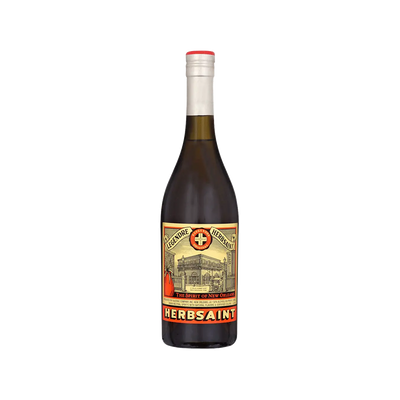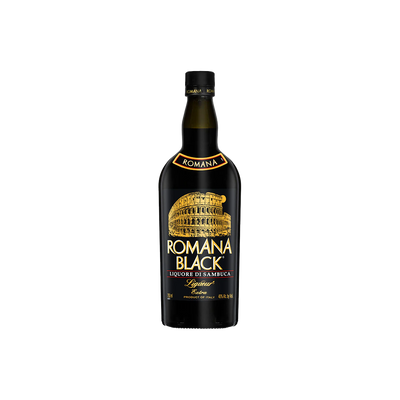Anise Liqueur
What is Anise Liqueur?
Anise liqueur represents a distinctive category within Herbal & Spice Liqueurs, defined by its bold licorice-like flavor profile derived from anise seeds, star anise, or fennel. These spirits typically carry a clear or pale appearance and possess that unmistakable sweet, aromatic intensity that transforms from crystal clear to milky white when mixed with water—a phenomenon called the "ouzo effect." What truly defines anise liqueur is its ability to capture the concentrated essence of anise in liquid form, creating a spirit that's both medicinal in tradition and social in practice across Mediterranean and European cultures.
Learn More About Anise Liqueur
What makes Anise Liqueur unique?
Anise liqueur stands apart from other herbal and spice liqueurs through its singular focus on the distinctive licorice-like flavor of anise seed, creating a clean, powerful taste profile that's instantly recognizable. While most herbal liqueurs blend dozens of botanicals for complexity, anise liqueur celebrates the pure, crystalline intensity of this one dominant flavor, often turning milky white when water is added due to the ouzo effect. This louche phenomenon, combined with anise's ability to completely transform the drinking experience with its bold, polarizing taste, makes it fundamentally different from the subtle, layered complexity found in other botanical spirits.
How is Anise Liqueur made?
Anise liqueur starts with a neutral grain or sugar beet spirit that gets infused with star anise, green anise seeds, or fennel through either maceration or distillation methods. The anise botanicals steep in the base spirit for several weeks, allowing their essential oils and flavors to fully extract, before the mixture is filtered and sweetened with sugar syrup. Some producers add other complementary herbs like licorice root or coriander during the infusion process to create more complex flavor profiles.
How do you drink Anise Liqueur?
Anise liqueur shines brightest when sipped neat or with a splash of cold water, which creates that mesmerizing cloudy transformation called the "louche effect" that turns the clear spirit milky white. Many Mediterranean cultures enjoy it as an aperitif or digestif, often paired with small plates of olives, cheese, or seafood during warm summer evenings when its refreshing, herbal qualities provide a cooling respite. While it occasionally appears in cocktails like the classic Sazerac or modern craft creations, anise liqueur's bold licorice flavor tends to dominate mixed drinks, making it better suited for simple preparations that let its distinctive character take center stage.
How do I choose good Anise Liqueur?
Start by considering whether you want a French pastis like Ricard for that classic Marseille café experience, or an Italian sambuca if you prefer something sweeter and more approachable. Your cocktail choice should guide your selection—reach for a high-proof Greek ouzo when making a Corpse Reviver #2 since you need that assertive anise punch to cut through the other ingredients, but opt for a gentler French pastis when mixing something delicate like a Monkey Gland where subtlety matters. Don't overlook smaller producers who often create more complex expressions with additional botanicals like fennel, star anise, or herbs that can add fascinating layers to your drinks.
Nutritional Information
Typical Calorie Range per Ounce: 95-110 calories
Typical Carbohydrate Range per Ounce: 10-13 grams
Typical Sugar Range per Ounce: 9-12 grams
Typically Gluten Free: Yes
Most anise liqueurs are made from distilled spirits and botanicals, making them naturally gluten-free. The high sugar content comes from added sweeteners used to balance the intense anise flavor. Always check the specific product label and manufacturer information to confirm gluten-free status, as production methods and ingredients can vary between brands.
Scrolled this far? Your reward? Anise Liqueur Trivia!
- Anise liqueur turns cloudy because of a chemistry magic trick called the "ouzo effect." When you add water or ice, the essential oils that were happily dissolved in the high-proof alcohol suddenly can't stay mixed anymore. They form tiny droplets that scatter light, creating that mesmerizing milky transformation. Scientists actually study this phenomenon for applications in everything from drug delivery to paint formulations.
- Absinthe wasn't banned because of hallucinations – it was banned because of politics and bad PR. The supposed psychoactive properties came from thujone in wormwood, but vintage absinthe contained less thujone than modern food-grade sage. The real culprit was wine industry lobbying after phylloxera destroyed French vineyards, plus sensationalized newspaper stories about absinthe-fueled crimes that sold papers like crazy.
- Sambuca's flaming ritual has nothing to do with Italian tradition – it's pure American invention. Italian nonnas would be mystified watching someone light their digestivo on fire. The whole "three coffee beans for health, wealth, and happiness" story? Also American marketing genius. Italians drink sambuca neat, at room temperature, usually after a meal.
- Pastis was created as absinthe's legal replacement, but it's actually a completely different beast. When absinthe got banned in France, Henri-Louis Pernod reformulated his recipe without wormwood, creating pastis in 1932. The twist? Pastis contains licorice root for sweetness and uses star anise instead of green anise, giving it a completely different flavor profile that's become beloved in its own right.
- Raki is so culturally significant in Turkey that there's an entire etiquette system around drinking it. You never drink raki alone, you always dilute it with cold water in specific proportions, and there's a proper order for toasting. The Turkish phrase "raki sofrası" describes the entire social gathering built around the spirit – it's not just drinking, it's a cultural institution that can last for hours with mezze, conversation, and careful pacing.
Higher-proof spirits can be intense. Mix carefully, taste thoughtfully, and enjoy responsibly.
Gift message (optional)


